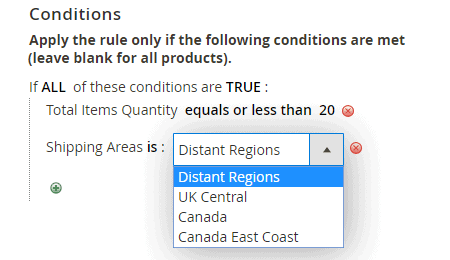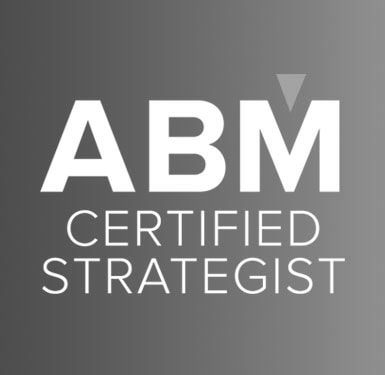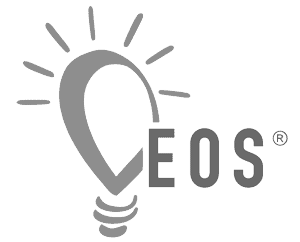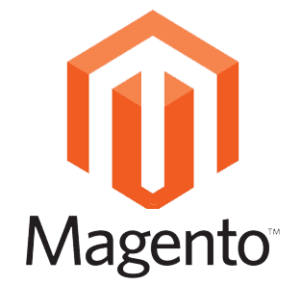B2B technology and industrial companies are adopting affordable, yet robust e-commerce platforms in record numbers. To be sure, as more companies look to e-commerce to add new channels of distribution, the expanding universe of scalable platforms gives senior leaders numerous options in which to choose.
In this comprehensive white paper, we’ll provide you with six practical factors that you can use to evaluate which e-commerce platform is most appropriate for your company’s needs. Additionally, we take a deep dive into the industry’s four leading platforms; pros, cons and cost. Finally, in the paper’s last section, we share how we helped several B2B companies in divergent industries choose the ideal e-commerce platform and CMS (content management system) based on their requirements, and why.
Part I
How to Choose the Best B2B E-Commerce Platform
B2B technology and manufacturing companies are adopting affordable, yet robust e-commerce platforms in record numbers. Forrester forecasts the U.S. B2B e-commerce will reach $1.8 trillion and account for 17 percent of all B2B sales in the United States by 2023. This explosive growth is driven by an abundance of companies doing everything they can to one-up peers and win your business with compelling technology.
“The US B2B e-commerce will reach $1.8 trillion and account for 17 percent of all B2B sales in the United States by 2023.”
Companies in scores of B2B industries are building out e-commerce capabilities as a strategy to quickly add another distribution channel — connecting you to a much larger audience. Additionally, with the surge of B2C commerce in the last few years (think Amazon), B2B buyers are demanding similar high-quality experiences from business-to-business firms.
If you want to add e-commerce capabilities to your website or “marketing stack,” this is your year. More B2B e-commerce software is available in online versions, which helps drive down both acquisition and maintenance costs. At the same time, software vendors are offering multiple versions of their platforms with tiered capabilities and price points. Some even offer free versions.
By some measures, there are at least a dozen e-commerce platforms you could consider for your company’s B2B storefront — too many for anyone to evaluate over a reasonable period. However, to save you time, we’ve provided you with just enough background on the industry’s top four platforms to help you choose the best technology for your company. We’ll look closely at what we see as the top four choices, based on market share and other factors:
Want to Keep Reading?

In addition to overall pros and cons of these top four software platforms, there’s a handful of key criteria to help you decide which e-commerce platform is best for you and your specific application. Nothing is one-size-fits-all. If you’re exploring e-commerce for the first time or updating an existing or older e-commerce website, there are many additional factors and decisions to consider, which impact both the website and your operations:
- Defining shipping rules
- Creating a product database
- Managing the inventory
- Choosing a server environment
- Order fulfillment
- Extendibility & reliability
- Promotion/discount types
- Complex product configurations
- Payment Processor
- Internationalization
- Taxes
Every B2B e-commerce website package must satisfy what are often two opposing requirements — a rich platform to creatively showcase your company’s products, and the need to offer users intuitive functionality to find and order products.
B2B E-commerce Platform Evaluation Factors
Technology, manufacturing and industrial companies often require more unique functionality from an e-commerce platform than a B2C company. For example, a B2B company that only sold custom products discovered that many of its customers were ordering the same products with similar specifications. Realizing an opportunity, the company began offering the same products to customers as regular inventory items.
“Every B2B e-commerce website package must satisfy what are often two opposing requirements — a rich platform to creatively showcase your company’s products, and the need to offer users intuitive functionality.”
As you consider the best choice for your company’s e-commerce platform, here are six factors to help you evaluate your options:
1. User Experience
Consider the customer’s user experience, and also the skill level and the number of people who will edit and maintain product information. Will there be more store content than marketing content or vice versa? Some systems make it challenging to easily create nicely-formatted marketing content pages. If the system requires administrators to know HTML, CSS or other languages to hard-code layouts, it may be challenging for the average admin to maintain your site. Conversely, some systems provide a slick and simple admin interface for adding and managing products. Additionally, some platforms are quite extensible, but their admin dashboards are so complicated they can require significant user training, which can be expensive.
Will all of your products be available for online purchase or will some require the customer to request a quote or have the product custom made to spec? Will there ever be a case where some customers can purchase a product outright while others may need to request a quote? Are you selling single or bundled products? Will you offer advance order purchases or backorders?
2. Website Life Expectancy
The average lifespan of a website is three to five years. But because a B2B site will likely integrate with numerous business processes its lifespan can be longer with careful maintenance. Make sure your platform is extendible enough to meet your long-term growth plans.
3. Business Rules Flexibility

How flexible are your company’s business rules when it comes to automated online functions such as shipping and tax considerations? Are you willing to flex your current processes or requirements to comply with a wide array of different scenarios? For instance, a large e-commerce platform like Shopify has baked-in business rules that reflect industry best practices for conducting online commerce. A business rule, for example, may state that returning customers don’t have to manually input shipping addresses or billing information. If your business can’t adopt the fundamental rules in the industry’s leading platforms, then you’ll have to tailor an off-the-shelf solution.
Building a B2B e-commerce presence is also an opportunity to evaluate your internal processes. Is every step in the process essential, does it add value?
4. Installed Base
What’s the installed base of the e-commerce platform you’re considering? Your in-house developer may have fallen in love with an emerging, niche platform that’s perfect for your needs. If the platform is too new, however, it could be challenging to find external expertise in case your developer leaves. With mature software, you can rely on a broader community of developers to tap for support questions, updates, best practices, crowd-sourced security patches and more.
Bottom line: It’s better if you choose an e-commerce platform with an extensive installed base — where technical help and support is prodigious. The largest of the competing platforms — Magento and Shopify — even organize annual worldwide conferences to bring together partners, developers, users and agencies for a multi-day immersive experience of learning and sharing.
5. Cybersecurity, Maintenance & Hosting
Some e-commerce applications are hosted, turnkey applications. If you don’t plan to use a hosted system, you’ll have to provide a dedicated server, proactive maintenance, security patches, regular PCI scans and more. While your website may not be a hacker’s prime target, websites at small and midsize businesses are hit daily by bots — most originating from Eastern Europe and China — testing the site’s firewall. According to security firm Sitelock, a typical business website is attacked 44 times a day. Victims of attacks often find their sites infected with “bots, malware, backdoors and other malicious software.” The stakes are even higher when the privacy of customer credit card information is potentially at risk.
If you take the open-source path, experts can help you develop robust security around your website, but costs are generally higher when compared to the licensing fees for hosted e-commerce stores on Shopify or similar platforms, and, the liability is on your shoulders.
We always recommend that you choose professional-grade, dedicated hosting for your company’s website and e-commerce platform, if you don’t go the hosted route. Additionally, to maintain a secure site, perform monthly or more frequent updates to your CMS and any plug-ins or extensions you’re using.
6. Systems Integration
Every company has legacy systems that may have to work cohesively with the new e-commerce platform. However, sophisticated ERP software such as NetSuite, IQMS, Sage and Infor can be challenging and will likely require extra support from your IT department. A skilled web developer can work with your IT department to make direct connections or use a third-party intermediary system, so that information is passed efficiently between systems, reducing the need for manual entry.
CMS and E-commerce Integration
Many systems work well as a standalone, but to provide your users with a seamless experience as they browse your website for educational content as well as purchasing products, we often recommend you build a platform with a proven CMS (content management system) like WordPress or Concrete5 for the marketing content, and your chosen e-commerce package, such as Magento or Shopify for the e-commerce functionality. The two systems can “talk to each other” to the extent that you’ll never have to enter the same information in each platform.
Some companies may choose to have two website administrators split duties between the store and corporate content — especially if your e-commerce platform contains hundreds of SKUs. Your users, of course, won’t perceive any differences within your website. For instance, you can create a standard header and footer which is managed by the CMS but includes cart and account status elements from the e-commerce tool. Other than a URL change (companywebsite.com, store.companywebsite.com), your customers won’t notice that there are two underlying technologies.
Pros and Cons: Shopify, Magento, BigCommerce and WooCommerce
In the list below, we’ve summarized each of the top four B2B e-commerce platforms, provided several pros and cons and shared 2019 pricing data.

Shopify Overview
Subscription-based Shopify can scale from a small volume system up to an enterprise-wide system. The platform can easily handle large product volumes and spikes in traffic. You’ll appreciate its intuitive admin controls, which helps minimize training expenses. Additionally, Shopify is known for its relatively low implementation costs and offers several service plans.
Pros (+)
- Slick and easy admin interface
- Hosted — includes security and platform maintenance
- Low monthly cost and more economical by comparison build cost
- Online support from the platform
- Extensive, easy-to-use online documentation
- Large developer pool
- Broad API support
- Well supported tools for integrating e-commerce features into outside websites
Cons (-)
- Limited marketing content customization
- Cannot customize payment gateway or checkout process
- Business logic sometimes won’t accommodate your needs
Cost ($)
- Expect about $600/year for Shopify service access, addon apps, and hosting. For live shipping rates, the price jumps to about $4,000/year. An enterprise-level experience, Shopify Plus, starts around $15,000/year.
Magento Overview
This powerful platform, which is now owned by Adobe, is used for midsize to large e-commerce sites. You’ll need an experienced web professional or developer to help you set up and manage Magento, which is an open-source or subscription-based service. It’s great for complex scenarios where you have a shared product database and multiple storefronts for various parts of your business. Magento is also ideal for complex freight shipping scenarios, or any other scenario where you need to customize the e-commerce system to match your requirements or business rules.
Pros (+)
- Open source and extendible
- Large marketplace for third-party customizations
- Flexible product option configurations
- Multiple destination shipping configurations
- Numerous user groups (facilitating dealer pricing, individual customer pricing, etc.)
- Flexible tiered pricing rules
- Compelling discount and coupon code system
- Large developer pool
Cons (-)
- More expensive to build and maintain
- Requires beefy dedicated server environment
- Needs security and regular PCI scans
- Admin tools can have a steep learning curve; could require extensive training
- Templates can be inflexible and require developer support for most adjustments
Cost ($)
- Expect about $6,000/year to run and maintain Magento on a dedicated server with PCI compliance testing, firewall and monitoring.
WooCommerce Overview
The WooCommerce platform runs exclusively on WordPress websites as a simple plug-in, which explains its popularity. If you decide to use WooCommerce with an existing WordPress theme, make sure the theme is compatible with the plug-in (all themes aren’t). And because it’s open-source, the plug-in is free! The secret of success with WooCommerce is choosing a high-quality WordPress hosting service, and working with a skilled website developer.
Pros (+)
- WooCommerce and WordPress are both open source and can be enhanced via WordPress plug-ins and WooCommerce extensions.
- Large developer pool
- WordPress CMS is highly customizable for marketing content
- Simple and intuitive dashboard tools
Cons (-)
- Enhancing a site with numerous plug-ins or extensions may increase the site’s complexity and potentially cause maintenance problems as the plug-ins and extensions independently evolve over time.
- A large developer pool, combined with a low barrier to entry, can result in quality problems if you hire inexperienced people. Make sure you vet your employees or contractors before making hiring decisions.
- With some installations, WooCommerce exists on your hosting server, which makes related liability a concern.
Cost ($)
- Expect about $4,000/year for WooCommerce hosting, monitoring, maintenance, and licensing for addons.
BigCommerce Overview
The BigCommerce platform is available as standalone software, as well as a subscription-based service. The software’s dashboard is easy-to-navigate and will have you up and running in little time. The customizable software allows you to transform your store’s appearance and functionality into an effective, bespoke website.
Pros (+)
- No transaction or setup fees
- Create unlimited staff accounts — ideal for large companies
- Multi-channel selling to use on Facebook, Amazon, eBay and others
- Plans include unlimited bandwidth, products and storage space
- Can download theme files to edit offline
Cons (-)
- A small selection of free themes
- You must upgrade to a more expensive plan if you surpass the annual sales threshold associated with your plan.
- Recurring billing isn’t available out-of-the-box — but the feature’s available in the app store.
- Some advertised features only available to U.S.-based users
Cost ($)
- Expect about $1,200/year for BigCommerce service access, addon apps, and hosting. For an advanced search filtering, the pricing jumps to about $3,200/year. An enterprise-level experience is available starting at $11,000/year.
B2B Companies Are Growing Faster Through E-Commerce
In part II we share how six companies in divergent B2B industries chose and integrated the ideal e-commerce platform and CMS.
Part II
Mini Case Studies: How we helped choose the ideal e-commerce platform and CMS for 6 B2B companies
Each of the following six B2B companies faced unique challenges and objectives, which resulted in a broad mix of e-commerce platform solutions. As discussed previously, the ideal solution is rarely an easy, and convenient, one-size-fits-all system.
For instance, if your company ships hazardous materials, your products will incur additional expenses to meet regulatory compliance requirements. Hazardous material shipments always require custom freight calculations. Shopify can accommodate some custom calculations, however, additional programming or coding may still be necessary to meet your requirements. Additionally, Shopify can’t be used if the shipping user interface needs modification.
The same would be true for any highly restricted product categories (think of examples like shipping ammunition or CBD products). Here, an online checkout process could require the buyer to validate their age and reveal federal or state certifications and licenses, which results in added complexity and the need to customize a feature that’s not always as easy with a straightforward hosted solution; these categories are also sometimes not allowed on hosted ecommerce solutions.
In cases where companies are shipping large, heavy, or voluminous items such as machinery and multiple pallets, shipping becomes a complex transaction. Here, fees are dependent on freight options such as truckload, less-than-truckload, intermodal, expedited, and so on.
And finally, some B2B buying scenarios may call for your website users to enter purchase orders or unusual forms of payment, such as wire transfers, for transactions that can cost tens of thousands of dollars. Some scenarios could lead to customizing the website’s cart as well as the checkout process.
How 6 B2B Companies in Divergent Industries Built E-Commerce Capabilities
In the following scenarios, six B2B companies were adding e-commerce functionality to existing websites or launching new sites with e-commerce capabilities to serve their customers better. We worked with each to select a CMS (content management system) or an e-commerce platform to address the company’s overall system requirements. Several industries are represented in the scenarios to demonstrate a breadth of solutions that could also apply to your situation: manufacturing, value-added distribution, training and consulting, and publishing.
Custom Manufacturer
Solution—Concrete5; Magento
This custom manufacturer of commercial speakers wanted to provide another channel of distribution by allowing online ordering of its most popular custom products in smaller quantities for prototyping or small batch needs. The website needed to enable customers to order custom products and request quotes along with options to order items regularly stocked items. Additionally, this site offers in-depth educational and marketing content.
A robust and customized product compare feature, including sound wave graphs, led us to Magento for the website’s e-commerce component. Concrete5 got the nod for serving up the site’s educational and marketing content. This flexible CMS allowed us to add editable header and footer content into content collections, or stacks. With custom tools, designers can easily use the same content blocks on both Magento and Concrete5 for visual continuity as well as functions such as “cart status.”
Value-Added Distributor
Solution—WordPress; Shopify
A value-added distributor of automation and industrial products and solutions wanted to allow customers to purchase stock and easily-specified parts and reorders, while continuing to show their value and expertise with the majority of their more complex solutions. We resolved this by putting a limited catalog of easily specified parts available for purchase online, while encouraging customers to contact the sales team directly to access most of the company’s product catalog. Carefully curating the list of products available for online purchase to only the straightforward items reduced frustration and product returns, while also allowing the company’s custom solutions and expertise to shine. The website’s secondary purpose was sharing informational content to help generate leads.
We chose WordPress to manage the majority of the site’s content; Shopify’s “Buy Now” buttons were an ideal solution for the e-commerce functionality. For this application, WordPress was selected for its design flexibility and easy implementation. We were able to design and launch a beautiful site quickly.
Consultant and Trainer
Solution—Concrete5; Magento
This consultant and trainer to the manufacturing and automotive industry wanted to present a large body of educational, lead-generation and marketing content. Moreover, it wanted to provide its customers with the ability to purchase virtual classes, seats at live training events and physical items, as well as integrate with a custom LMS (Learning Management System).
Because of this site’s sophisticated marketing and online commerce needs, we chose Concrete5 to manage the site’s web content and Magento to handle the e-commerce side. Concrete5 also integrates with Quickbooks, the custom LMS, and numerous other marketing automation and CRM systems. The final system gave the company the ability to customize its numerous product pages.
Composite Distributor
Solution—Magento
This provider of composites for marine, aerospace and hobbyist applications faced the challenge of shipping hazardous materials, which called for a solution that required complex freight calculations. In other words, shipping fees couldn’t be calculated using simple tables or add-on fee formulas. Unusual shipping requirements, coupled with the fact the site didn’t require many pages of marketing content, led us to select Magento as the website’s e-commerce platform.
Finally, to integrate the site with the company’s accounting system, we created a custom gateway when no off-the-shelf solution was available.
Niche Publisher
Solution—Concrete5; Shopify
A niche publisher needed a store-based website that was governed by special rules for providing free content to decision-makers (researchers who specify the materials)while simplifying purchasing transactions for end-users. Furthermore, the system needed to integrate with a legacy accounting and ERP software system.
Fulfillment and business logic for the system was simple, yet many products required specific content needs that couldn’t be handled by standard e-commerce tools. Products also had several purchase options along with demo requests; therefore, it made sense to use Shopify to manage the standard purchase workflow and couple that with tools to support other sales channels.
Life Sciences Manufacturer
Solution—Shopify
This life sciences manufacturer sells its products online to purchasing agents and wanted to replace an antiquated purchase order process with a modern, e-commerce interface. Since its content was nearly all product-focused, the company didn’t need multiple web page templates, which obviated the need for a CMS. Their business rules for shipping, checkout, etc. were able to follow industry norms with a shift to their internals where “sets” and individual dyes were simply tracked as different inventory items. Shopify was the ideal approach for the company’s new website.
Choosing the Best B2B E-Commerce Platform for Your Company
The secret is finding the ideal blend of affordability, scalability and performance.
For technology, industrial and manufacturing businesses seeking methods to grow faster or add new distribution channels, e-commerce platforms are making it easier for marketing leaders to acquire new customers through a low-risk, inexpensive strategy. Today, you have a capable mix of B2B e-commerce platforms to choose from for designing and building an ideal system. Regardless of your industry and technical requirements, you’ll find a platform that offers you the perfect blend of affordability, scalability and performance.
Windmill Strategy helps companies in technical industries launch robust and effective e-commerce capabilities. Whether you’re expanding existing operations, or just beginning your e-commerce journey, we’ll help you forge a path. Let’s Talk














